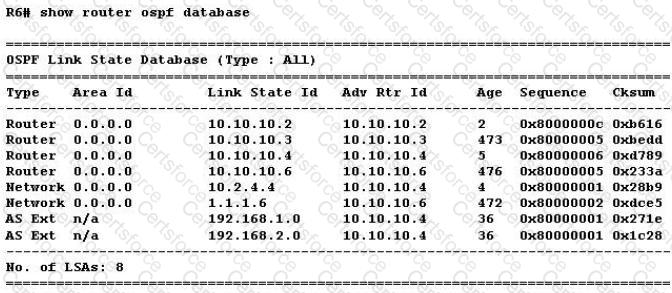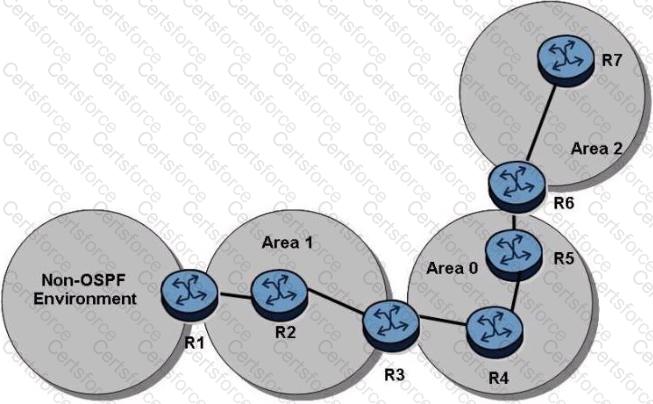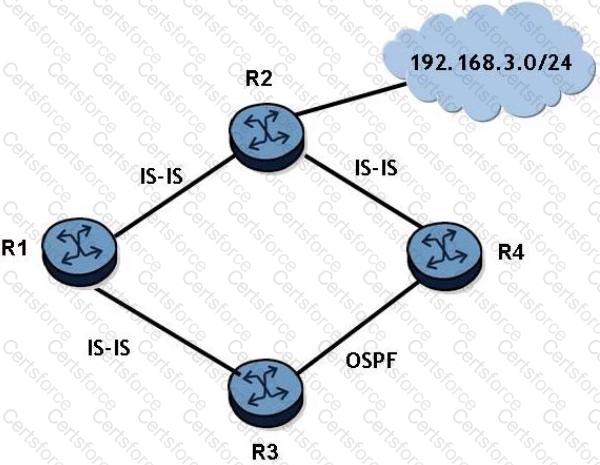An IS-IS router receives a CSNP that references an older LSP than the one in its database. What action is taken?
Click on the exhibit.

Given the output shown, which router is the ASBR in this network?
How does an IS-IS router acknowledge the receipt of an IS-IS LSP on a point-to-point link?
Click on the exhibit.

In the topology shown, router R1 is an ASBR configured to export external routes to OSPF.
Assuming that there are no stub or NSSA networks, which of the following regarding LSAs is TRUE?
Click on the exhibit.

Router R2 has a directly connected interface to network 192.168.3.0/24 that is included in IS-IS.
If router R4 redistributes the IS-IS route to 192.168.3.0/24 into OSPF, router R3 will receive two routes to 192.168.3.0/24. Assume that all IS-IS routers are L1/L2 capable and are in the same area.
Which of the following is TRUE?
Two IS-IS routers are exchanging Hello packets with different authentication types. Which of the following is TRUE?
Which type of LSA packets describe external routes originated within an NSSA area, and to what type are they converted to at the ABR?
An OSPF router receives an update in which the sequence number, age, and checksum are the same as the entry already in the topological database. What action does the router take?
Which of the following route types must be manually configured and will not re-route traffic when a link failure occurs in its path?
What are the three databases that are maintained by a link-state protocol?